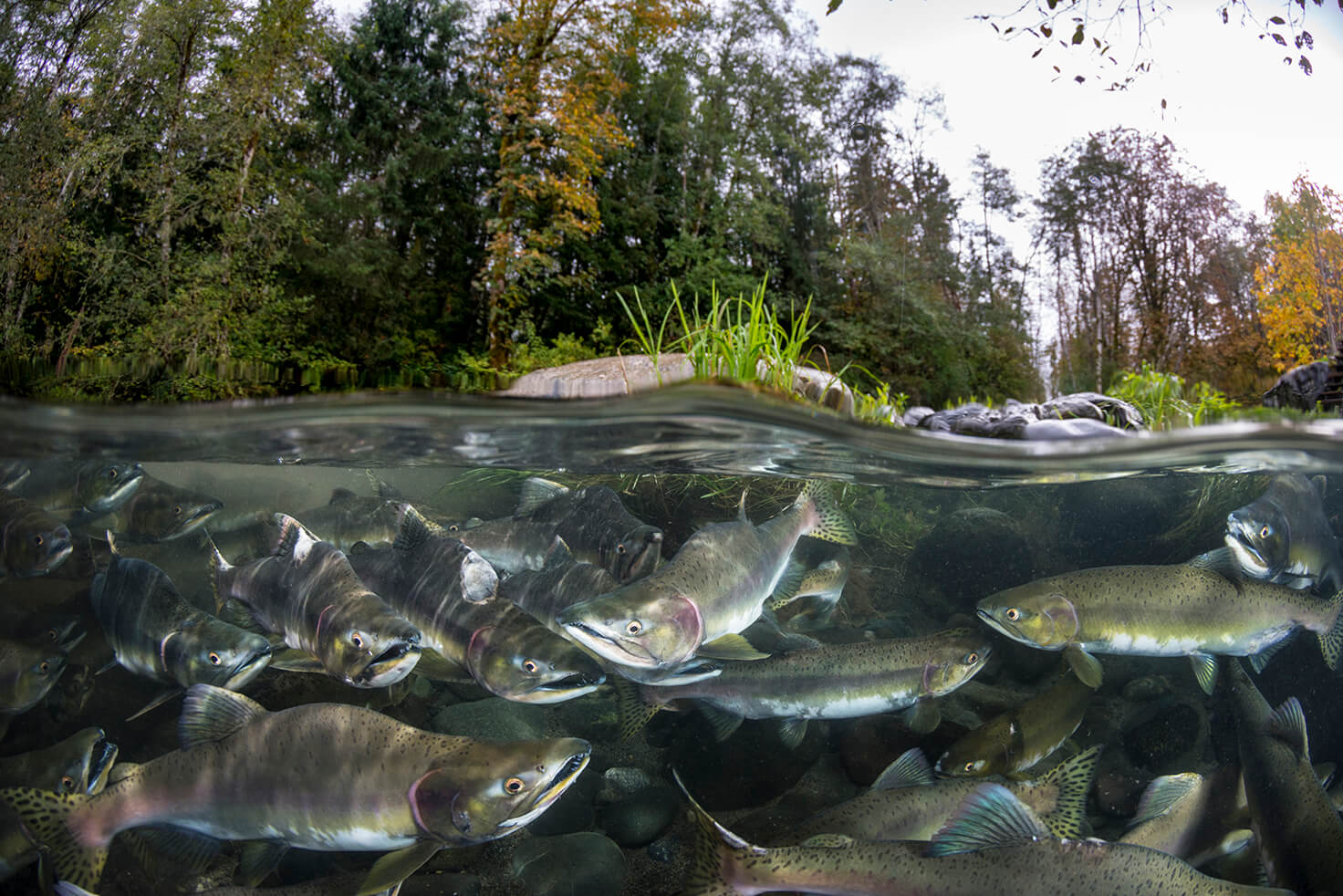The Importance of Estuarine Environments for Pacific Salmon
Pink Salmon (Oncorhynchus gorbuscha) – E. Jones
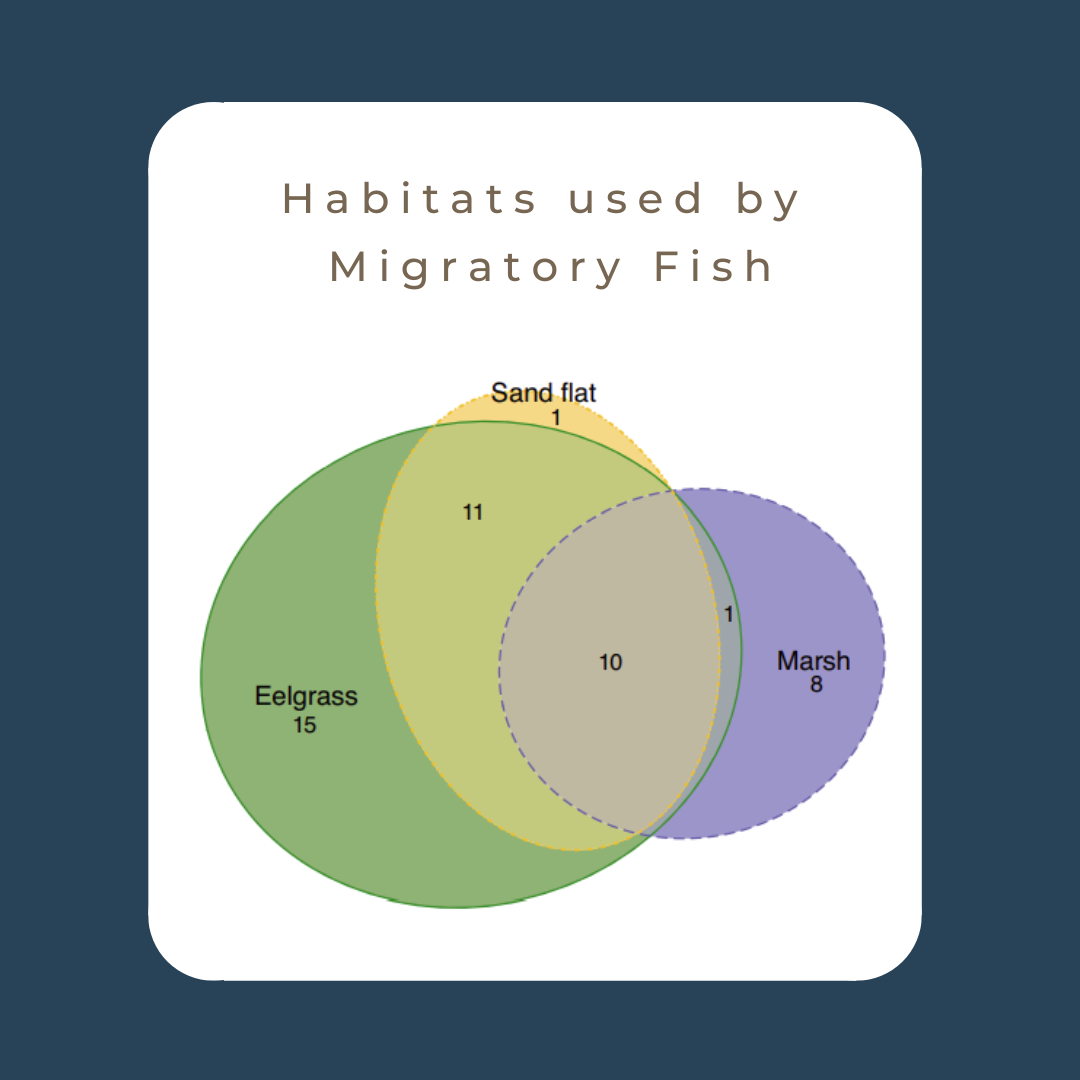
There are 8 unique and 11 shared species in marsh, 15 unique and 22 shared species in eelgrass, and 1 unique and 21 shared species in sand flat habitat.
The article Habitat use by juvenile salmon, other migratory fish, and resident fish species underscores the importance of estuarine habitat mosaics contends that limited and degraded estuarine environments pose a large obstacle to salmon survival. As they leave rivers, salmon enter and stay in estuaries before migrating to the ocean. All Pacific salmon species use estuarine habitats during their downstream migrations, with some residing there for days to months. Therefore, the abundance and quality of the habitat in estuaries greatly impacts salmon survival rates.
Determining the significance of estuarine habitats is complex. An estuary is subject to daily tidal variations and fluctuations from seasonal changes in temperature and hydrology. To compound the issue, each species using an estuary has a unique life-cycle pattern.
The Fraser River, where the study was conducted, is a primary source of freshwater and significantly impacts the marine ecosystem surrounding it. It supplies essential terrestrial nutrients that support the fish communities and influences the migration routes of emigrating salmon and it governs the nutrient cycling processes of the surrounding Salish Sea. The estuary’s lower reaches serve as crucial habitat for over 50 fish species, including those found in freshwater, estuarine, and marine environments.
Over 70% of the Fraser River estuarine habitat has been lost or disconnected due to habitat degradation, shoreline modification, alteration of hydrology, nutrient and waste runoff, and noise pollution from industrial, agricultural, and urban development.
Within what remains of the Fraser River estuarine environment, there are three habitats used by salmonoids and other migrating fish: seagrass, marsh, and sand flats, which together form a ‘seascape’. The article found that in terms of estuarine fish species richness and abundance, eelgrass made the largest contribution and exhibited the greatest seasonal variation. While marsh habitat supported the fewest species, it supported more distinct species as compared to sand flat and was particularly preferred by juveniles of the five commercially significant Pacific salmon species. In the Fraser River estuary, marsh was found to be the most used habitat by migrating salmon.
Concerning Pacific salmon species in the Fraser River Estuary, the authors of the study concluded that concentrating exclusively on eelgrass habitat remediation could exacerbate the reduction in salmon populations by depriving them of the remaining marsh. This highlights the idea that interconnected seascapes comprising various habitat types support higher biodiversity and productivity.
Chalifour L, Scott DC, MacDuffee M, Iacarella JC, Martin TG, Baum JK (2019) Habitat use by juvenile salmon, other migratory fish, and resident fish species underscores the importance of estuarine habitat mosaics. Mar Ecol Prog Ser 625:145-162.
Eelgrass
EElgrass (Zostera marina) is a seagrass that grow to create vast underwater meadows, commonly referred to as eelgrass beds.
Sand Flat
Regularly disturbed by wave action and tidal fluctuation and lacking vegitation.
Marsh
A type of wetland that is dominated by herbaceous species. They form a transition between the aquatic and terrestrial ecosystems.
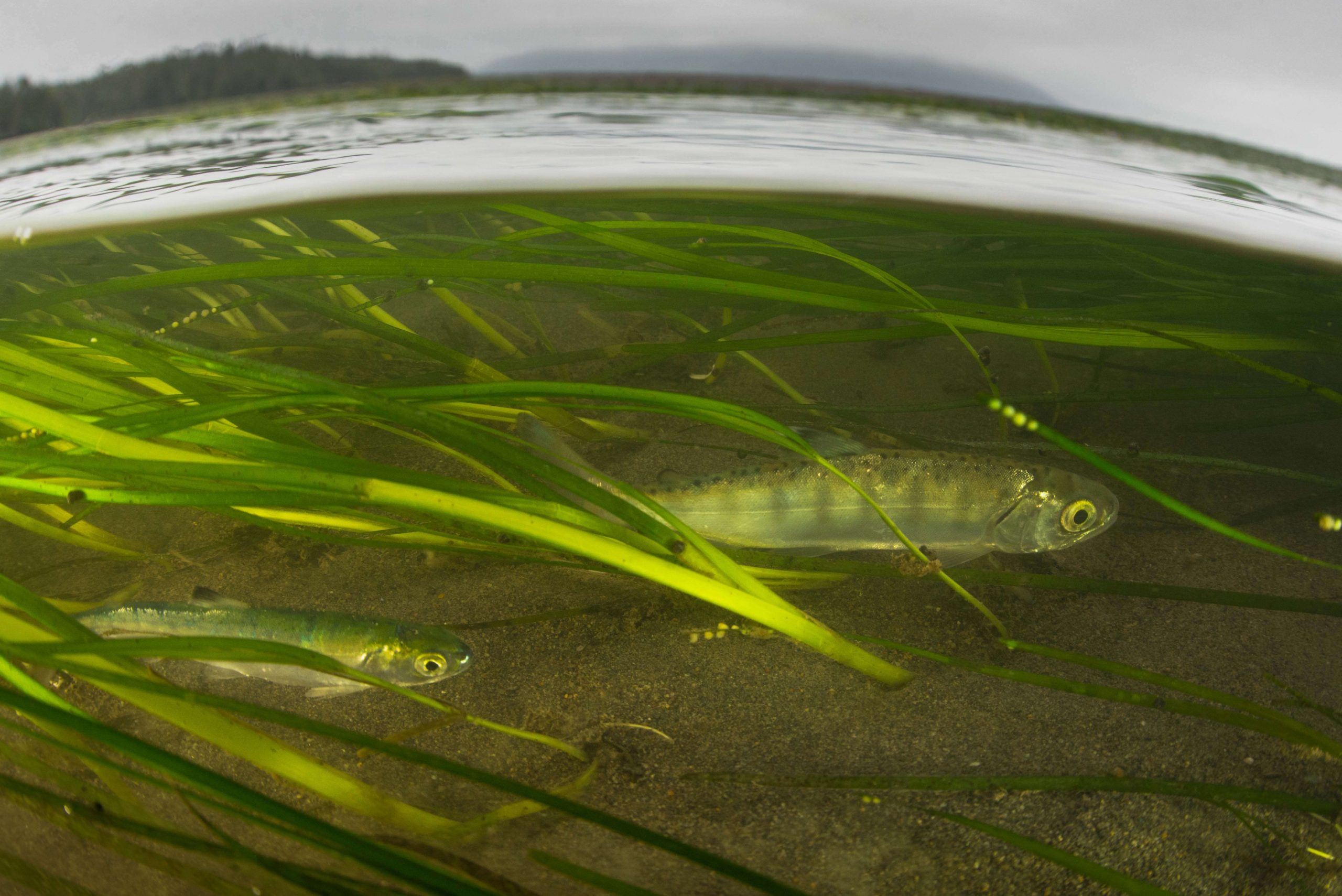
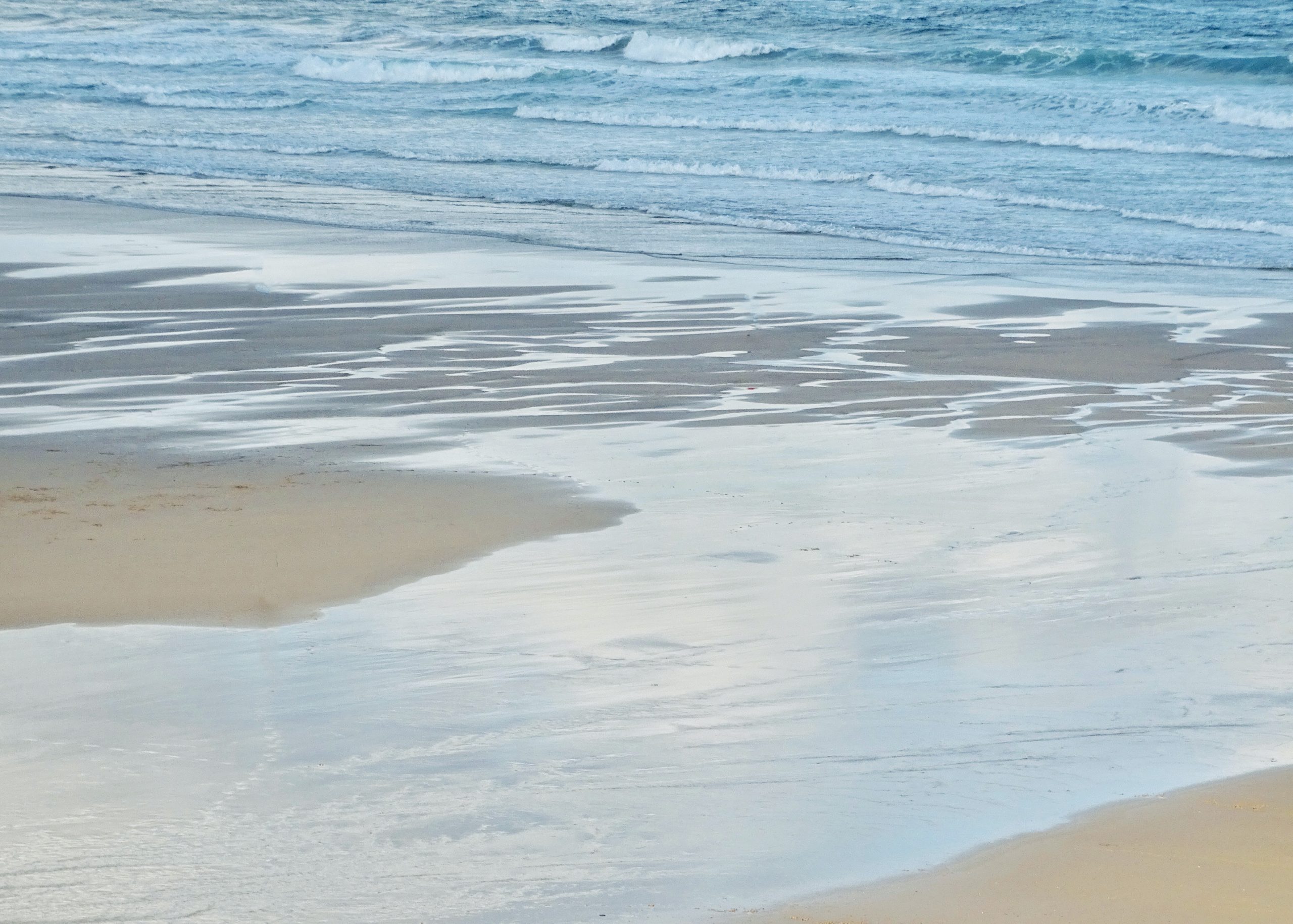
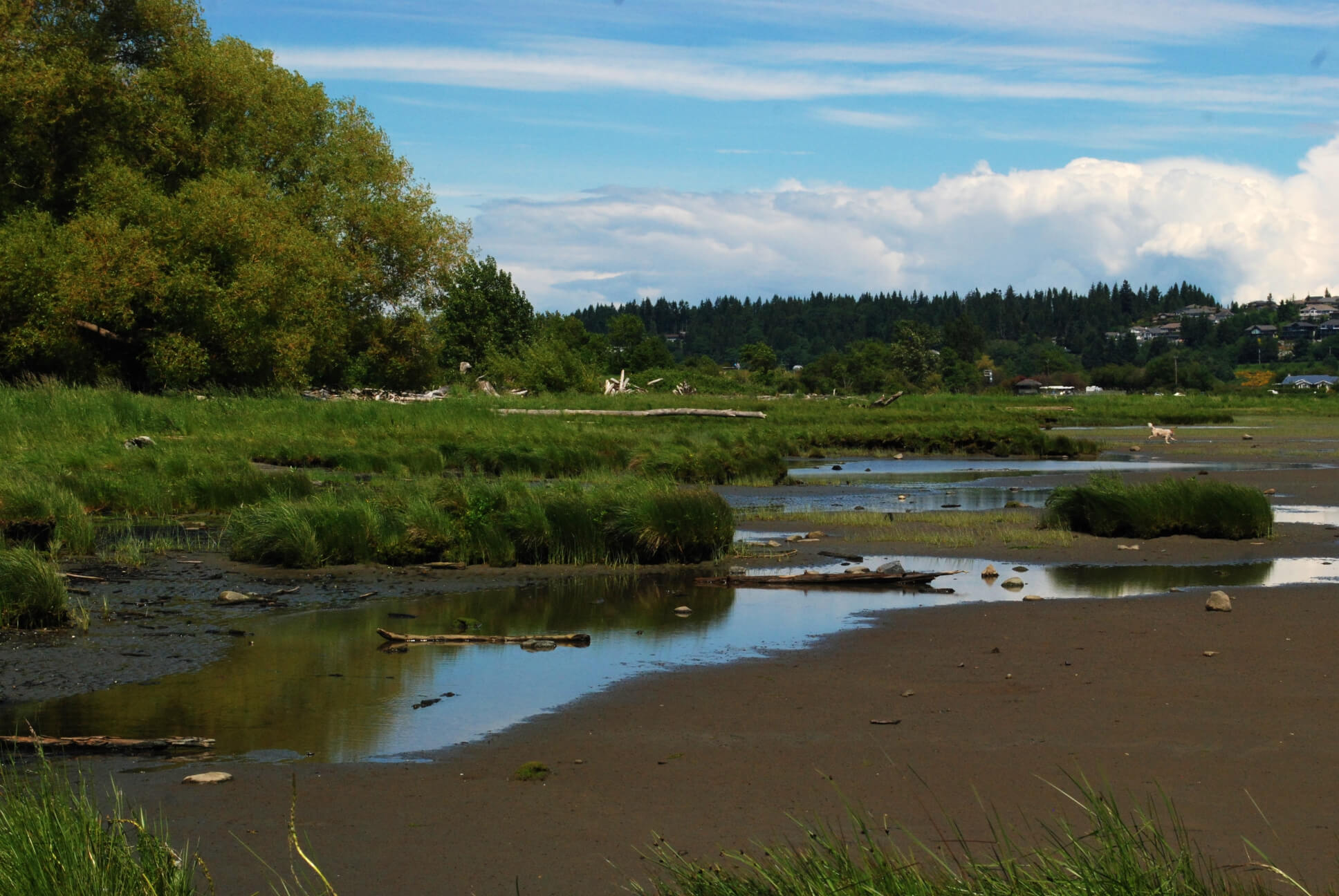
Related Posts
Mallard Creek Restoration Update for 2024
Restoration work in Mallard Creek will continue this year, including invasive removal, restoring connectivity, and trial planting of a new riparian species. Volunteer events starting in September 2024.
Volunteer at Kus-kus-sum Chamber of Commerce Event
We are showing Kus-kus-sum off to businesses in the Valley through a Chamber Business to Business event. We are looking for a few volunteers to assist with this event.
Coastal Plant Monitoring
Get involved with our new vegetation community science monitoring program!
Spring Field Trips
Throughout May and June Project Watershed will be taking elementary school classes out on field trips to learn about estuary and coastal ecology and to assist with planting and plant maintenance.
Working Together to Identify Forage Fish Spawning Beaches
This year marks the 5th year of a partnership between Comox Valley Project Watershed Society and North Island College on a long-term study to examine intertidal spawning habitats of forage fish in the northern Salish Sea.
Glen Urquhart Update – Spring 2024
Latest news from Glen Urquhart restoration progress for spring 2024.


